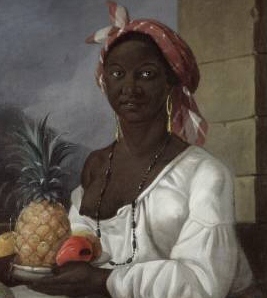Meade and Pirio’s article makes several suggestive and useful points in addition to revealing an aspect of African American emigrationism usually not mentioned. They begin their analysis providing some context for the long history of emigrationism and its ties with black nationalism, pointing to Liberia in the 1840s being the best example. However, white philanthropists and racists who saw blacks as incapable of being integrated into American society supported this form of emigrationism. By the late 19th and early 20th century, however, many black nationalists espoused emigration to Africa or elsewhere without the aid of white philanthropists, including Bishop Henry McNeal Turner and Chief Alfred Sam. Unfortunately, African American settlement in Africa proved to be impossible during this period since the entire continent besides Ethiopia and Liberia were under colonial rule, and neither of the aforementioned independent nations were willing to accept black settlers due to the resistance of European colonial powers. Since the possibility of a black-ruled territory in Africa was ruled out, some fringes of the Garveyite, black nationalist movement across the US began to focus on emigration to Brazil and Latin America to escape racism and form an autonomous black nation in the Americas that could act as a beacon of anti-colonial and black nationalist ideology for Africans.
Ironically, Brazil, beginning in 1889, promoted a policy of whitening or branquismo that barred entry to blacks while offering favorable deals for agricultural land or work to white immigrants from Europe and North America. The vast majority of the 4.1 million immigrants were whites, usually from Portugal, Spain, and Italy, who were concentrated in southeastern Brazil. However, black nationalists favoring emigration to Brazil kept promoting it through different UNIA chapters, the black press, and because Brazil lacked the explicit signs of racism and discrimination seen in the US. Falling prey to the racial paradise image Brazil wanted to export, blacks saw Brazil as a land where racial discrimination was non-existent, a land where a black man could even be elected president! Other blacks who actually visited Brazil during the 1920s realized that it was only possible for blacks to prosper if they were skilled workers or professionals, but many continued to believe it was a racial democracy because miscegenation was encouraged, which obviously deviates from the US policy of strict Jim Crow. Thus, because blacks, whites, and multiracial Brazilians were more likely to mix and the absence of obvious, explicit racist organizations or policies, African Americans saw Brazil as an Eldorado where black farmers and workers could create their own independent, black-governed society.
The Brazilian government pressured the US to reject visas of African Americans from entering the country during the period. However, since the Brazilian state did not want to tarnish its image of a racially tolerant nation, they never explicitly stated that race was the factor in denying entry to blacks from North America. According to Meade and Pirio, another reason for Brazilian state opposition to black nationalist settlers was a desire to insulate the race consciousness and politicized manifestations of Afro-Brazilian resistance. Although they are reluctant to admit it due to a lack of further evidence, both Pirio and Meade present evidence that black sailors knew of and participated in the spread of black nationalism across the Black Atlantic, including coastal Brazil. Furthermore, the rise of Frente Negra Brasileira, an Afro-Brazilian civil rights organization in the 1930s, suggests that the black nationalist politics of Garveyism did indeed permeate Brazilian society. The organization sought cultivation of racial pride, organized black militias, held military-style parades through Sao Paulo and Rio, and sponsored all-black commercial and industrial businesses and schools. Clearly, black nationalism, specifically that of Garvey and the Universal Negro Improvement Association, resonated with and influenced Afro-Brazilian resistance to white supremacy.
Since black North Americans idealized Brazilian race relations while Afro-Brazilians themselves
were living in society dominated by the whitening ideal, this gulf underscores the importance of comprehending race as a social construct. African-Americans, seeing the lack of organized white hate groups and formal, racist policies, even took the existence of a multiracial impoverished Brazil as evidence of racial democracy. This essay also opens up several questions as to the relationship between black nationalism and black civil rights movements in Brazil and Latin America and their relationship with the contemporary movements in the United States. Brazil, a nation where black nationalism and separatism were said to take place less frequently than the US, where a strict one-drop rule operates and clear demarcated lines for segregation of the races exists, nevertheless resembles the US because of racist immigration and domestic policies. In addition, the fluid, pro-miscegenation views of race developed in Brazil, though dividing people of African descent based on how much white ancestry they have, did not hide the goals of branquismo to reinforce a hierarchy where white tops everything else, regardless of the degree of racial mixing.









.png)

.png)




